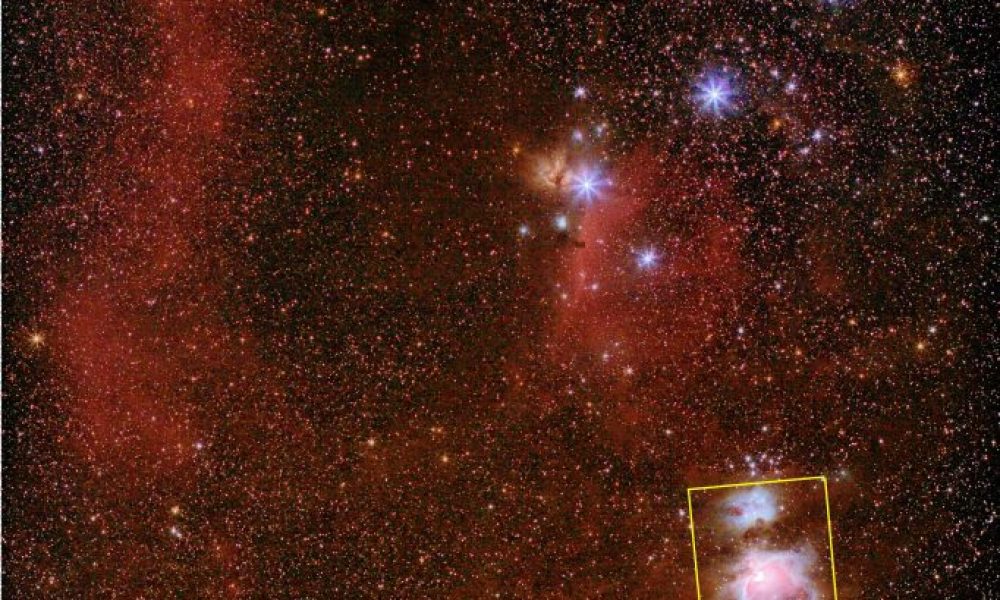More Orion from Lookout Observatory
Dear Observer,
Orion is an amazing winter constellation, and I just couldn’t resist showing you a little more of it. On a clear dark night it can be seen about half-way up in the sky to the south at about 8:30 PM. In my last report, on December 10, the second picture was of the central part of Orion showing the Hunter’s 3 belt stars and sword. I have reproduced it here as my first picture except last time we zoomed in on an area just below the lower left belt star, Alnitak. That area contained the wonderful Horsehead Nebula. This time we are going to zoom in on the belt – the area inside the current yellow rectangle – which contains the famous Orion Nebula.
The second picture is at a scale 6 and ½ times that of the first. The first picture was taken at Lookout Observatory with very dark skies. The second picture was taken in Albany, CA, with terrible S.F. Bay Area light pollution. A special filter had to be used to screen out this scattered extraneous light. Because of this difference in sky quality, even though the second image was exposed 5 times as long as the first, and a lens 5 times larger in diameter was used, both images show about the same amount of nebulosity, and both show about equally faint stars. (You can see this for yourself if you enlarge the first image until the yellow rectangle is the same size as the second image.) However, the second picture shows much more detail because at the larger scale it has about 6 times the resolution of the first, and also because special processing techniques were used to bring out the details in the swirling nebulosity and to compensate for the 50-fold variation in brightness that makes it difficult to show the faintest nebulosity without completely burning out the brightest parts.
Much of the constellation of Orion is covered in a huge cloud of nebulosity, and the Orion Nebula (also known as M42) is just the brightest part. The hot blue-white stars embedded in it reflect light off some of the gas and dust, causing it to look blue, and energize other parts of the hydrogen gas to cause it to glow red. Above the Orion Nebula is another blue nebula with darker reddish parts that give it its popular name of the Running Man Nebula. (He’s running to the left.) The Orion Nebula is about 1300 to 1400 light years distant, and it is about 24 light years across. A dark triangular patch near the top points to the brightest (whitest) part of the nebula. In the middle of this is a lumpy looking star, which is actually 4 stars – called the Trapezium – all blurred together in this image. These are just the brightest of several thousand young stars in a cluster spread throughout the Nebula. This is an area of new star and planet formation. Stars are actively condensing out of the gases, and the Hubble telescope has detected hundreds of proto-planetary disks around stars here. It is expected that in about 100,000 years most of the nebula will be gone, having either condensed into stars and planets or else been driven away by outward radiation pressure from the young, very hot stars – a process called photo evaporation. The Universe is far from static! Hang around for a few hundred thousand years – or get reincarnated then – and you’ll see lots of changes.
Keep looking up,
Carter

